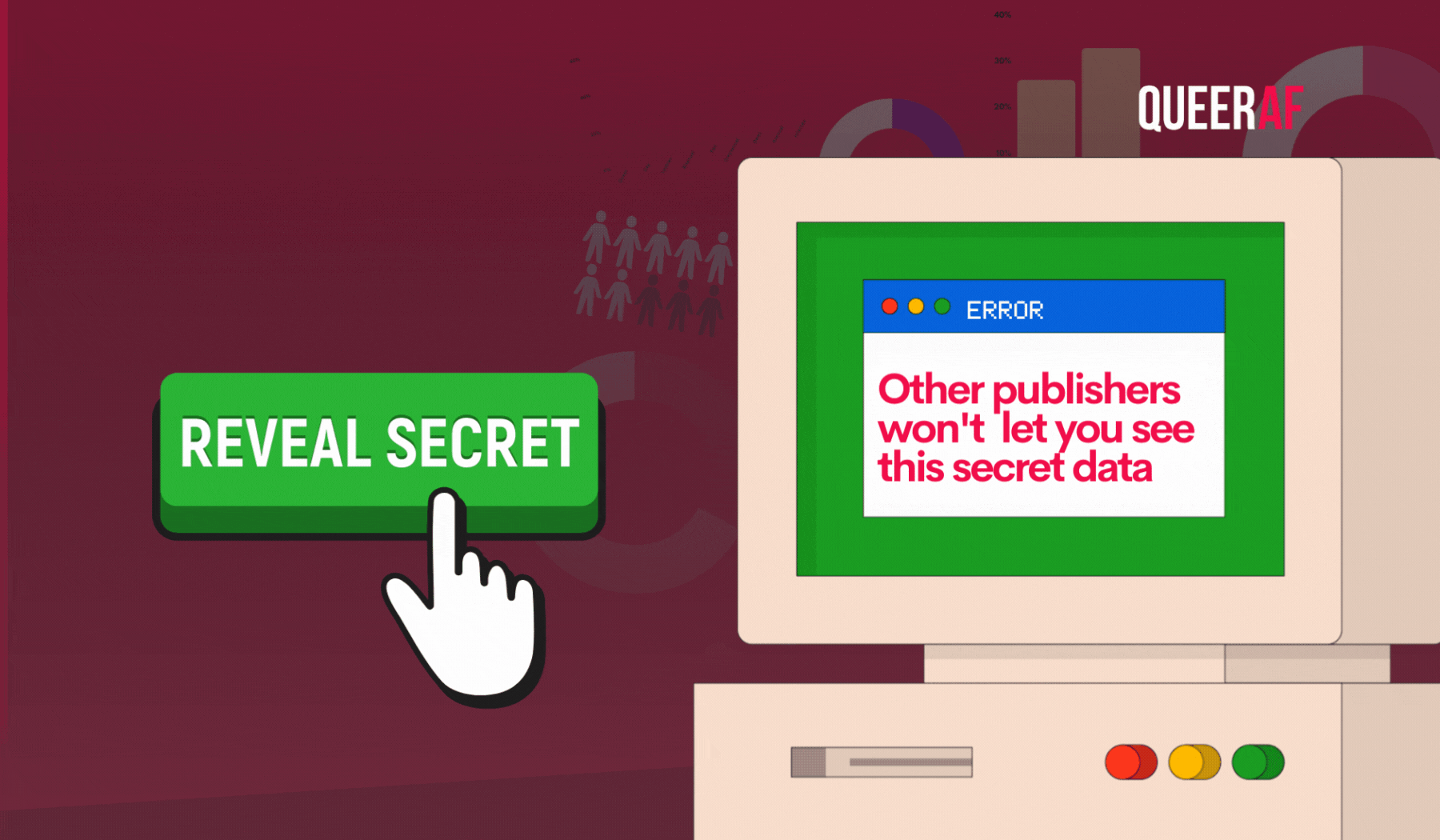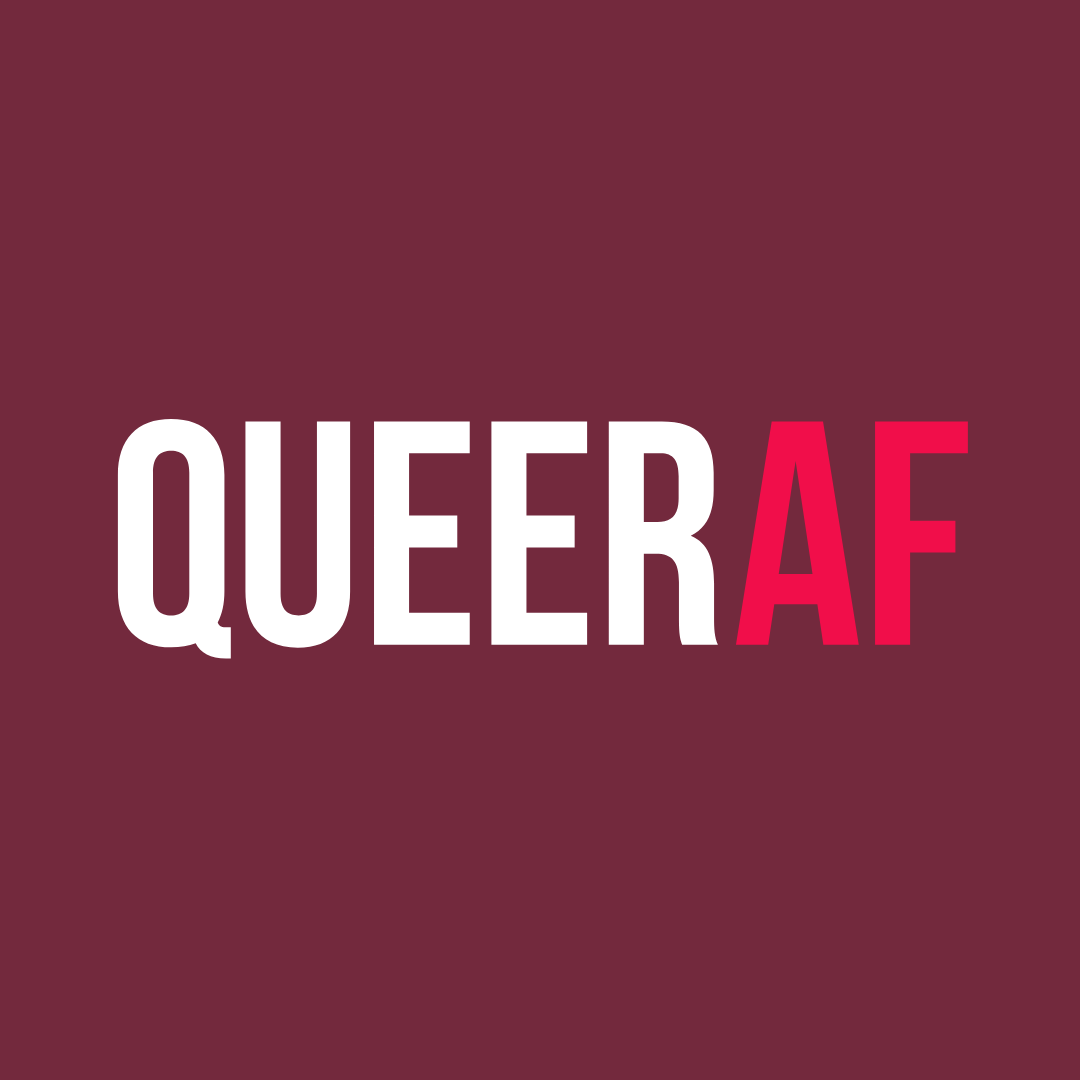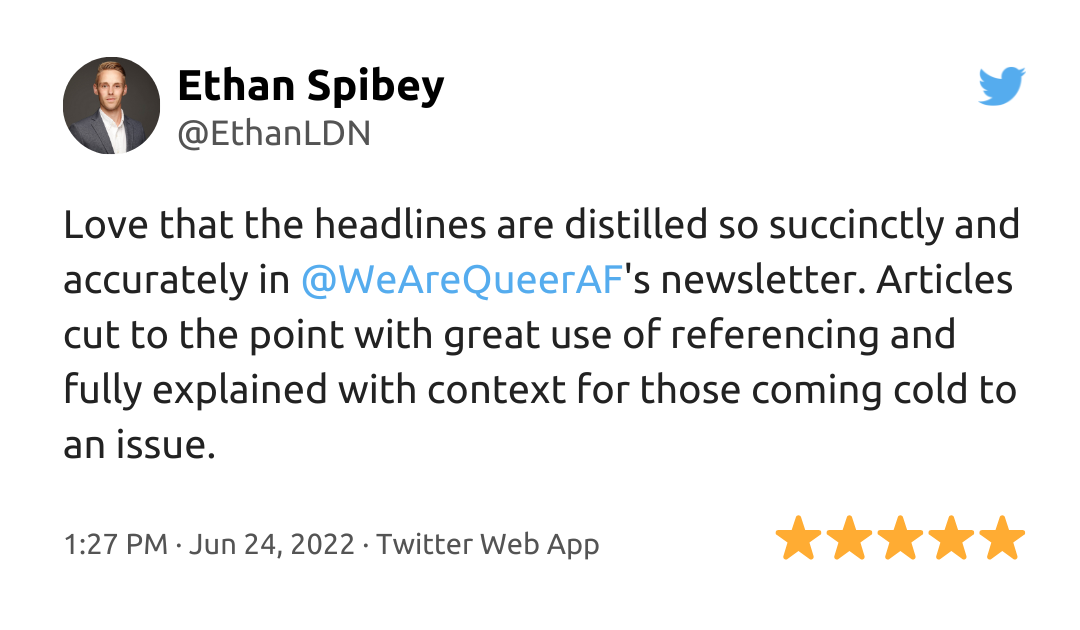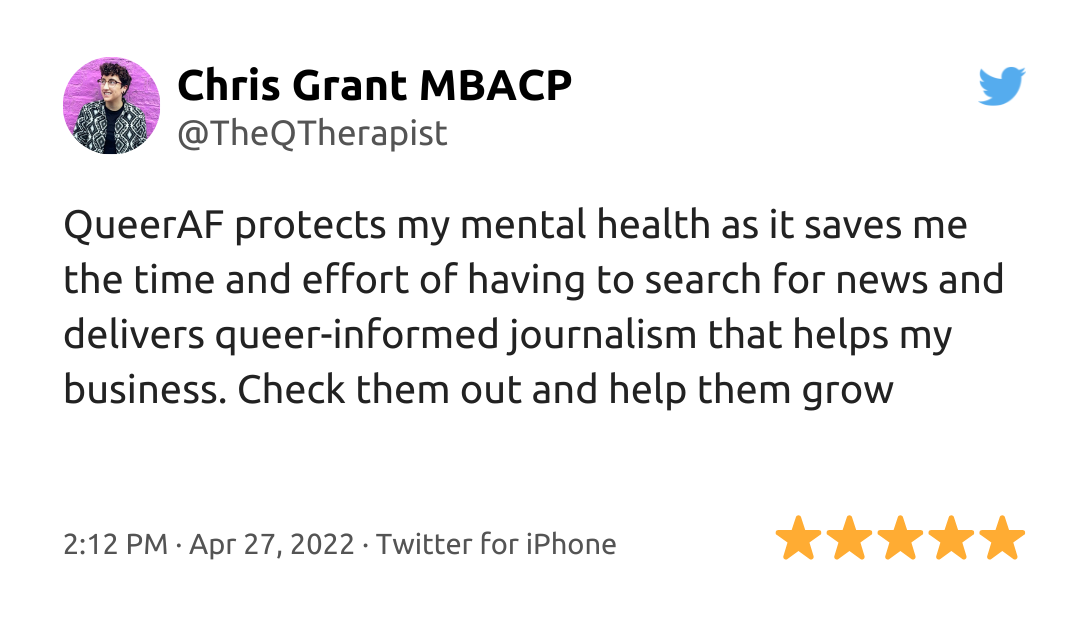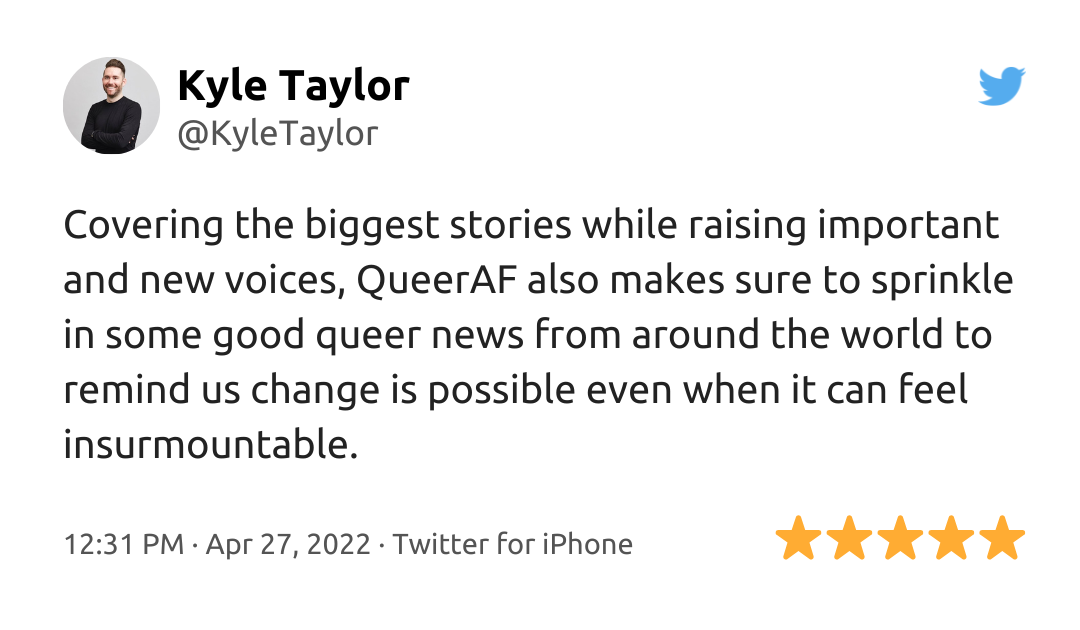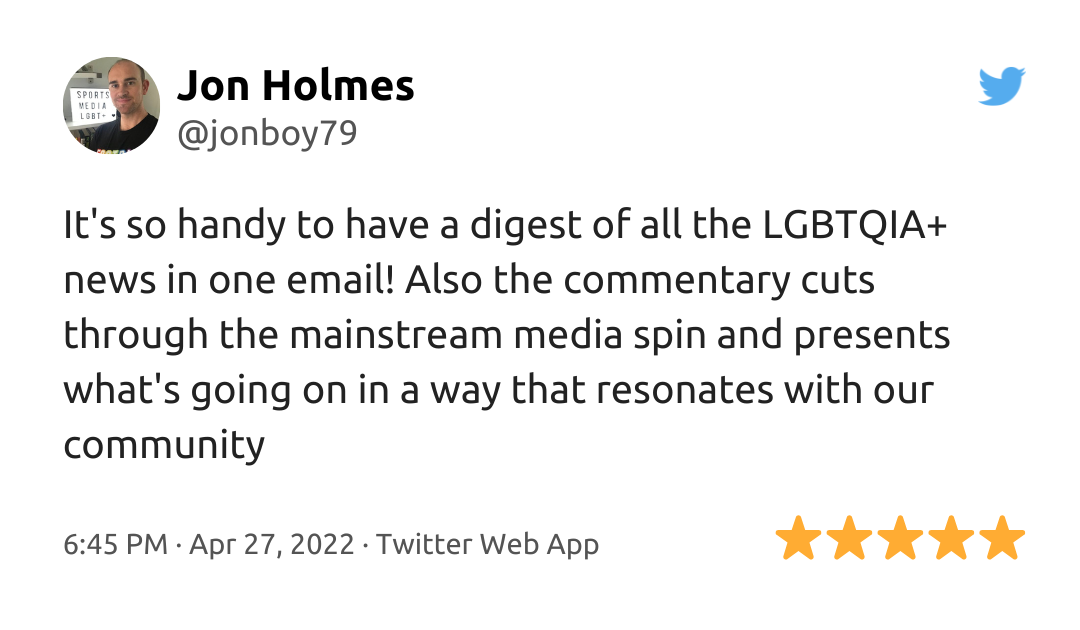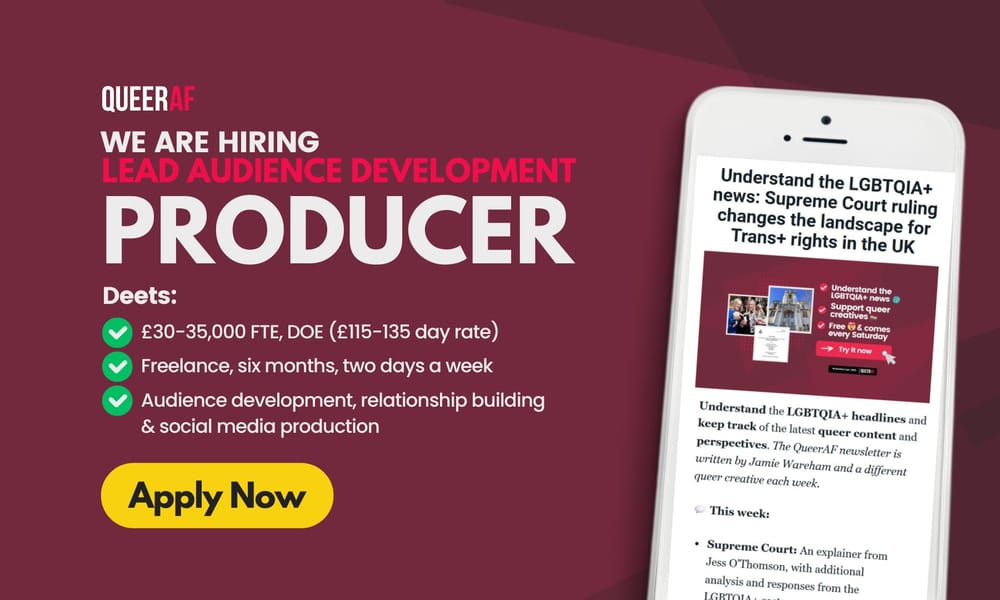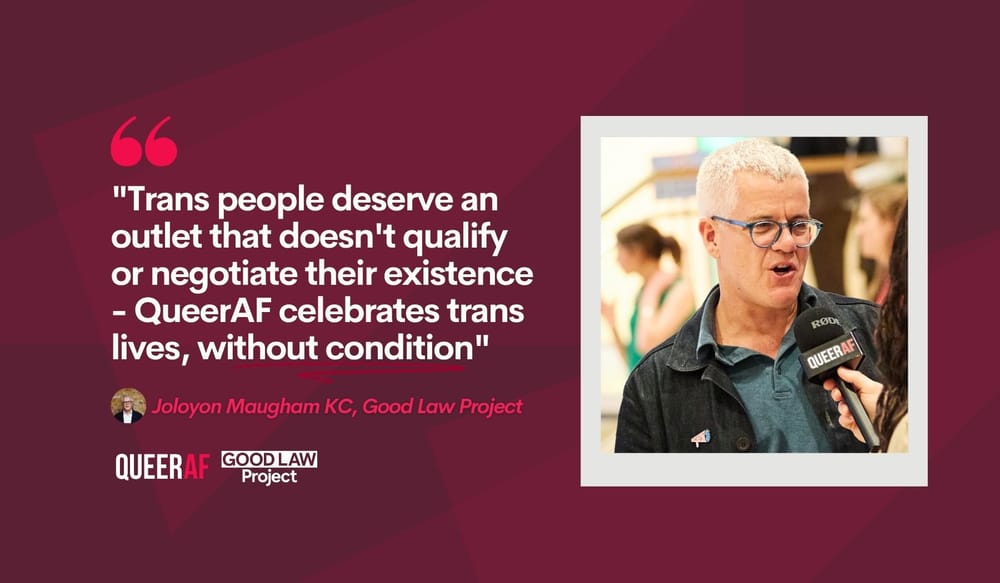We've reviewed our first year as an independent, regulated LGBTQIA+ publisher. Now you can too:
Trust in mainstream media is at an all-time low. Short-term ad-driven revenue models are failing the LGBTQIA+ community.
The diversity of those who write our stories has barely changed. A fundamentally broken industry constantly misrepresents us.
That's why we set up QueerAF to be a platform where cr eators, journalists and producers can get paid and commissioned directly by the QueerAF community.
Usually, only editors get to see data like this. But for the same reason, we became the first and remain the only LGBTQIA+ publisher in the UK to be regulated - we're showing you the data.
By sharing this data with you, we're the only LGBTQIA+ publisher to publish this secret behind-the-scenes info. Here it's accessible - so you can hold us accountable.
So don't just take our word for it; scroll down to see how we've done in our first year.
We're launching this data as part of our inaugural crowdfunding. Although memberships are always the best way to support us – if you think our approach to creating media with queer folk from marginalised backgrounds rocks, please:
Donate to support QueerAF journalism
Data from Jan 25th 2022 - Jan 19th 2023. Data sets can add up to more than 100% as people identify with multiple intersectionalities. This data is based on contributors optionally sharing their intersectionalities in an open box.
Sexual and romantic orientations

3 in ten of our writers identified as attracted to multiple genders.
Specifically, 19% were bisexual, and a further 7% as pansexual or panromantic.

By label and by nature:
60% are QueerAF
3 in twenty (15%) said they fell within the asexual spectrum, which includes demisexual and demi-romantic orientations too. This community is vastly underrepresented within the media.
10% of our writers identified with the word lesbian, while other women writers used the term, queer women.
We've made the effort to use the identity more in our writing after a contributor argued the collective reluctance to use the word has become stifling.

Gender identity

A large majority of our contributors are gender diverse, just shy of 7 in ten (66%).
Many use or identify with multiple gender identities or labels, especially those who are non-binary. This reflects the fluidity of gender.

What she/he/they said:
Our writers pronouns
33% of our contributors in the last year identify as transgender, 26% as non-binary, 7% as agender and 2% as genderqueer.
Of our cisgender writers, 19% were women, and 17% were men.
Marginalised backgrounds

Data breakdown
Racialised community: British Pakistani 2%, Bengali 2%, South Asian 7% British East Asian 2%, Asian 5%, Indian 5%, Black 10%, Mixed Race 2%, POC 5%
Migrant background: Migrant 7.14%, Second generation migrant 2.38%
Low income: Working class 14.29%, Low income 2.38%
The media needs to build trust in all areas of the LGBTQIA+ community. But racialised communities have been hit hardest by the worst traits of the UK press.
As a small, but new independent publisher, we recognise we have work to do to build and earn that trust. We're proud that 29% of our writers come from a racialised community; the UK press averages at 14%. But we recognise that we have work to do on all backgrounds in this section.
17% are from Asian backgrounds, and 10% Black. The rest are other people of colour. However, we look at this data in its full breakdown, and you can too.
This year's NCTJ Diversity in Journalism report found that working-class people were heavily unrepresented in the news industry. It's because journalism relies heavily on graduates and university routes. Our schemes, which welcome novice writers with no exerpertise aim to help others who don't use these routes.
17% of our contributors come from a low-income background, while 10% are from a migrant background.
Disabilities

Data breakdown
Disabled 17%, Wheelchair 2%, Chronically ill 2%, Autistic 7% , ADHD 2%, Neurodiverse 17%
NCTJ's Diversity in Journalism report found that in UK newsrooms, 19% of journalists have a disability. At QueerAF, a third, 33%, of our contributors are disabled or have a chronic illness or neurodiversity.
Folks with neurodiversity are often locked out of opportunities because workplaces don't understand their needs. It's why we've worked hard to design our schemes and communication approach, so they work for contributors - not just us.
What about the cash?
How we spend your money
We're funded by people, not advertisers. It's so we can make content that counts - for the community, not clicks.
Our members set the agenda and tell us what to create. We've created an 'open newsroom' culture to tell the best version of the story, not simply the fastest.
So it's only right we tell you how we spent your money too.

You fund QueerAF:
Our funds go to queer creatives
Our next biggest costs were IT software and subscriptions like the non-profit Ghost, which we host and run our newsletter with, plus Zapier, Typeform, MailerLite and other tools you use to interact with us.
After this was tax and accountancy fees, like other digital businesses, we also lose around 2% of our income to payment fees.
As part of our founding members' pledge, our founder hasn't taken a salary for the first financial year - writing the newsletter and doing our advocacy work for free. This isn't sustainable if we want to grow our impact.

You are our most important editor
The unique approach we've set out in this year in review shows just how important it is that you're in charge of what we make.
We've delivered these commissions based on what matters to you - our members and readers, not advertisers or other outside pressures.
We do all this alongside supporting queer creatives with their career, portfolio and a joint mission to change the media.
Although memberships are always the best way to support us – if you think we've done a good job delivering commissions to a diverse range of LGBTQIA+ contributors matters - please, support our crowdfunder.

